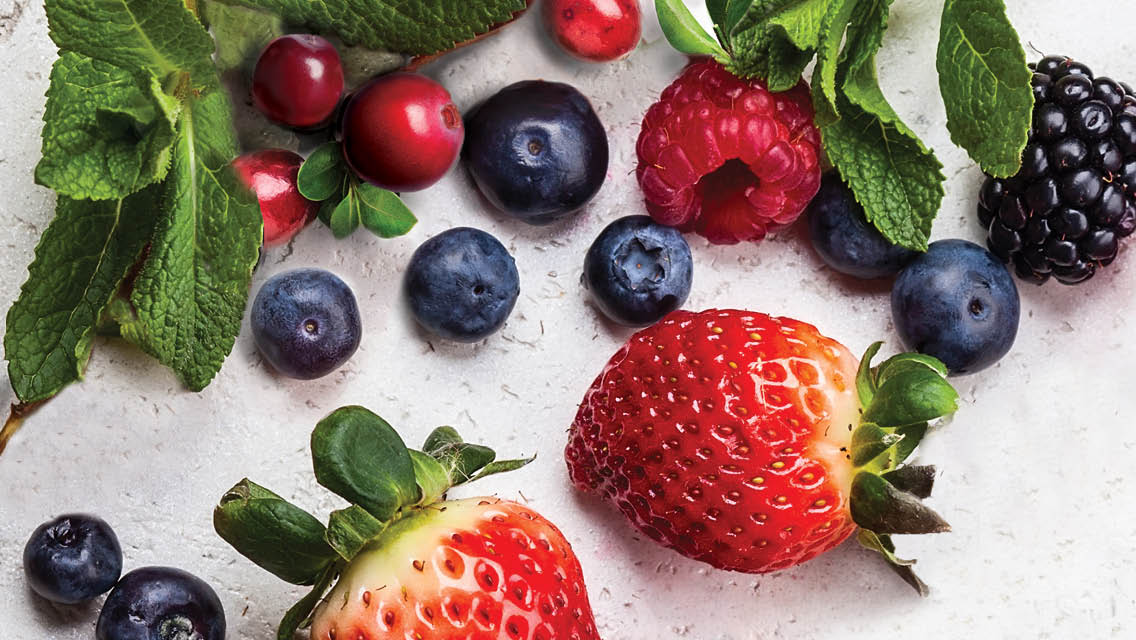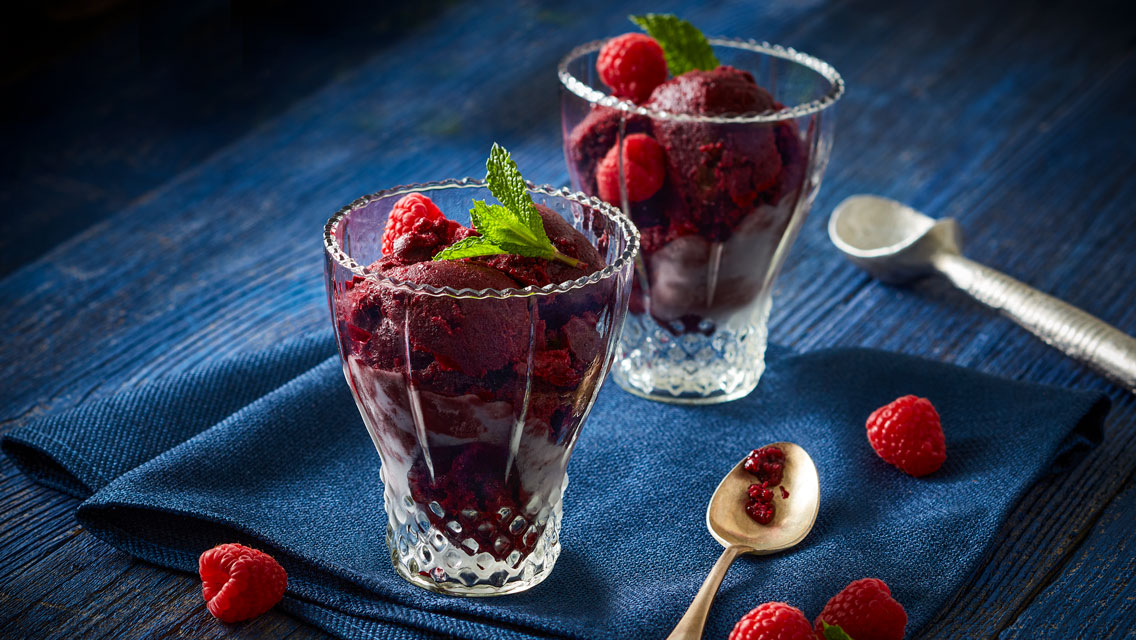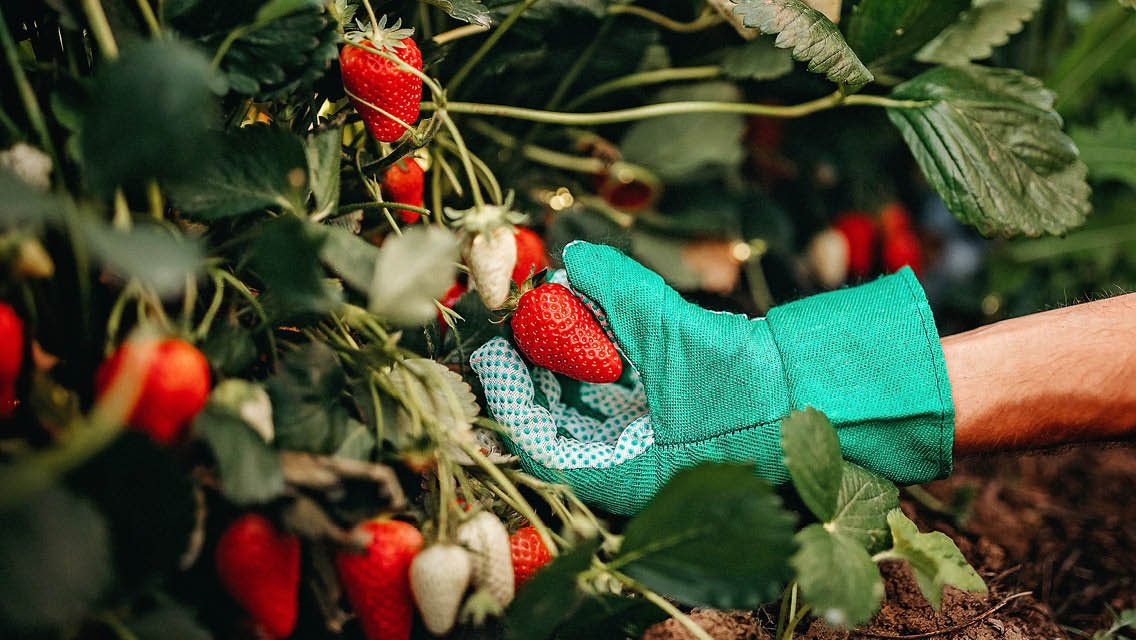Explore the following sections:
Lesser-Known Berries
⋅ Black Currants
⋅ Goji Berries
⋅ Golden Berries
⋅ Serviceberries
⋅ Mulberries
Nothing heralds the height of summer like a dizzying array of perfectly ripe produce. And one of the best ways to maximize the nutritional rewards of the season’s embarrassment of riches? Two words: Eat berries.
You can’t swing a reusable tote in summertime without hitting a pint of fresh berries, whether you’re at a grocery store, farmers’ market, or u-pick patch. Yet berries are estimated to make up less than 10 percent of the average American’s fresh fruit intake.
Berries are a treasure-trove of vitamins, minerals, and fiber. Plus, each one offers a host of phytonutrients, plant compounds that can fortify the body against conditions such as heart disease, type 2 diabetes, and cancer.
Bite for bite, berries may bestow more nutritional oomph and health bona fides than any other food, says functional nutritionist Jesse Haas, CNS, LN. “Berries are concentrated nuggets of goodness that have a profound impact on the body,” she says.
There are some fruits that are technically berries (bananas and avocados) and some berries that are not true berries (raspberries, blackberries, and strawberries consist of clusters of smaller fruits and are therefore “aggregate fruits”). Yet any small, fleshy fruit that’s popularly known as a berry generally deserves the praise heaped upon it — and here are just some of the reasons why.
The Power of Phytonutrients
All berries began as wild plants. To thrive in nature, plants infuse their tender, fragile, fleshy fruit with substances to guard against such dangers as bacteria, viruses, and fungi. These protective compounds, including carotenoids and polyphenols, are a berry’s immune system.
“A raspberry’s concentrated magic is part of how it was able to survive in the wild,” explains Haas.
Phytonutrients don’t just make for healthy plants; they support healthy human bodies too. They act as antioxidants, protecting cells from free-radical damage. Polyphenols improve heart health by lowering blood pressure and trimming levels of bad cholesterol. They can also help stabilize blood sugar and guard against neurodegenerative diseases.
The queens of phytonutrients are anthocyanins. These are the natural plant pigments responsible for berries’ signature bright reds, deep purples, and blueish blacks. Plenty of fruits and vegetables contain anthocyanins, but berries boast extraordinarily high concentrations, which is why they often pop up on lists of superfoods.
“The term ‘superfood’ kind of makes me roll my eyes,” says Haas, “but I also love it because no matter how much [a superfood list] evolves, there is always a berry — or two or three — on it.”
A handful of fresh berries delivers a wealth of anthocyanins, anywhere from 30 mg in a cup of strawberries to a whopping 735 mg per cup of blueberries. In general, the darker and richer the berry’s color — looking at you, blueberries, cranberries, bilberries, and black currants — the more anthocyanins.
Berries deliver the most benefit when they’re part of a diverse, healthy diet, which is the best way to support a thriving gut microbiome. The body can’t fully digest anthocyanins and other polyphenols without help from gut microbes. Polyphenols act as prebiotics, meaning they feed good bacteria in the gut.
“Up to 95 percent of polyphenols are metabolized into smaller beneficial compounds by colonic bacteria,” says Deanna Minich, PhD, FACN, author of The Rainbow Diet: A Holistic Approach to Radiant Health Through Foods and Supplements.
Still, a less-than-perfect microbiome doesn’t mean you have to avoid berries; it’s just a good reason to consume them with other foods that support the flora, like probiotic yogurt.
Meet the Berries
Learn the many reasons it’s worth including more berries in your diet — not only for noshing, but also for treating common ailments.
Fresh Berries
Thanks to imported produce, most Americans have access to fresh berries year-round. But long-distance travel can be hard on berries, especially on the more smooshable varieties, such as raspberries. Even slightly crushed berries are quicker to attract bacteria and mold.
Sturdier berries, like strawberries, are hardy travelers but are often picked prior to peak ripeness to lengthen shelf life. If a strawberry is white around the stem, it could mean that it was picked too soon and, therefore, will have less flavor and fewer phytonutrients than a fully red berry.
Fresh berries are best enjoyed locally and seasonally, purchased at their peak of ripeness. Depending on the region, berry season roughly begins with strawberries in late spring and ends with cranberries in autumn. Local strawberries, raspberries, and blueberries are the wealth of summer across much of the middle and eastern United States. Many Californians, meanwhile, have access to fresh, locally grown berries year-round.
Blueberries
With their tight blue jackets, blueberries are sturdy and self-contained, making them one of the most mess-free and versatile of edible berries. Sweet and juicy with a signature spicy scent, wild blueberries grow on bushes native to North America, and farmers have been carefully cultivating domesticated blueberries for more than a century.
Blueberries have anthocyanins to thank for their hue. Because they have such potent anti-inflammatory properties, eating just a third of a cup of blueberries a day may lower the risk of several diseases. These berries improve blood-vessel function, making arteries more flexible and less likely to stiffen with corrosive plaque.
A six-month study, the longest of its kind, published in 2019 in the American Journal of Clinical Nutrition, found that eating a cup of blueberries a day lowered the risk of heart disease by up to 15 percent for people with metabolic syndrome, a cluster of conditions (including high blood pressure) that besets up to a third of American adults.
In the kitchen, blueberries freeze well. They hold their shape when tossed into pancake or muffin batter. Surprisingly, cooked blueberries may be even better for you than fresh ones: According to some sources, heat makes their phytonutrients more bioavailable. And if you’ve ever noticed a greenish tint to cooked blueberries (say, in blueberry muffins), that’s a harmless side effect of the berry’s delicate pH moshing with the recipe’s more alkaline ingredients, such as baking soda.
(See “Blueberries: Recipes, Techniques, and More” for more on these nutritional superstars.)
Raspberries and Blackberries
These two berries are often found at the top of superfood lists; their resplendent colors signal that they are chock-full of anthocyanins.
Raspberries and blackberries, as well as their many hybrids — including loganberries, boysenberries, and marionberries — are aggregate fruits: Each individual berry is composed of dozens of teensy fruits, called drupelets, held together by a snare of tiny hairs.
Each drupelet contains its own miniature seed, making it a complete fruit. Because of their complex aggregate structure, raspberries and blackberries top the berry charts for fiber content with roughly 8 grams per cup. And they’re low on the glycemic index, making them a solid choice for anyone keeping an eye on blood sugar.
(See “The Health Benefits of Raspberries” for recipes and preparation techniques to make the most of your summer’s harvest.)
Strawberries
America’s favorite berry by far is the strawberry. The average American eats about 7 pounds of strawberries each year.
Wild strawberries grow in many regions, but the larger, cultivated varieties that most people are used to eating come mainly — more than 90 percent — from coastal California.
In the taming of wild strawberries, some flavor and nutrients were lost, but cultivated strawberries still contain plenty of anthocyanins and more vitamin C than most other fruits or berries. And, in a shout-out to strawberries, a study published in 2022 found that a compound they contain, pelargonidin, may lower the risk of Alzheimer’s disease; though pelargonidin is present in most berries, strawberries contain the highest levels.
(Learn more and find simple recipes to enjoy this sublime fruit at “Love at First Bite: Strawberries.”)
Medicinal Berries
Cranberries
Grown on vines in large, sandy bogs, cranberries are another fan favorite. The typical American consumes 2.3 pounds of cranberries each year, most of it in juice form. Only about 5 percent of cranberries produced in the United States are sold fresh; the remaining 95 percent are processed, mostly into drinks.
The cranberry’s mouth-puckering acidity rivals that of a lemon or lime, and it’s one reason they’re rarely eaten fresh and often sweetened with sugar or honey.
The gelatinous canned cranberry sauce served on millions of Thanksgiving tables was invented early in the 20th century by a cranberry farmer desperate to salvage his damaged crop. He puréed the berries, canned them, and voilà! The rest is culinary history.
Cranberries straddle two berry worlds — edible and medicinal. Along with anthocyanins, cranberries contain an antimicrobial agent called benzoic acid. In the wild, benzoic acid may protect cranberries from the moisture in their growing environment. In humans, the acid is thought to help keep bacteria from attaching to delicate tissue linings inside the human body, such as in the urinary tract.
Urinary tract infection (UTI) is among the most common types of bacterial infections. In 2021, the authors of a large meta-analysis on cranberries and UTIs concluded that regular cranberry consumption lowered UTI risk by 30 percent in people prone to the infections. And cranberry juice was 35 percent more protective against UTI than cranberry capsules or tablets.
(Check out “Cranberries: Recipes, Techniques, and More.”)
Elderberries
The purple-black fruit of the elder tree, elderberries are tart and sour, flavors that lend themselves more readily to syrups than to snacking. Generations of Western herbalists have used the black elderberry for its immune-enhancing properties, says Haas. And the berry’s reputation stands up to scientific inquiry.
A review of clinical evidence in 2021 showed that elderberry extracts may be capable of shortening the duration of some cold and flu symptoms. Again, the secret powers are likely anthocyanins, which are abundant in these dark berries. According to the review authors, “Anthocyanins can attach to (and render ineffective) viral glycoproteins that enable viruses to enter host cells.”
Lesser-Known Berries
Black Currants
Commonly found in preserves because they contain so much pectin, as well as in syrups and liqueurs (think cassis), fresh black currants are not to be confused with more familiar Zante currants, which are not berries but a tiny grape varietal.
Due to their deeply dark skin, black currants score high on the anthocyanin scale — higher than conventionally grown blueberries. They also have four times the vitamin C of oranges.
Native to Europe and Asia, black currants are especially popular in Britain, where even purple Skittles are black-currant flavored, not grape flavored as they are in the United States.
(Try them with this recipe for Mediterranean Greens With Feta, Mint, Olives, and Currants.)
Goji Berries
Also known as wolfberries, these bright red members of the nightshade family are typically eaten dried, and they taste like a raisin-cranberry mash-up. Long popular in China, goji berries earn their reputation as a superfood by packing high quantities of antioxidants, carotenoids, vitamins, and minerals.
These berries are particularly high in lutein and zeaxanthin, both beneficial for the eyes. In one small but promising study, published in 2021 in the journal Nutrients, healthy adults who ate a handful of goji berries five times a week for roughly 13 weeks significantly boosted the protective pigments in their eyes, the same pigments capable of preventing age-related macular degeneration.
(For a healthy, satisfying breakfast try them in this Sunrise Grainless Granola.)
Golden berries
Packaged in a papery husk, similar to tomatillos, golden berries deliver a bevy of vitamins and nutrients just like their counterparts, but they outperform most other berries when it comes to carotenoids and phytosterols. Carotenoids, particularly lutein and zeaxanthin, help ward off chronic eye disease. Phytosterols may help lower LDL cholesterol.
Serviceberries
Also called saskatoon or shadblow or juneberries, serviceberries are a member of the rose family. Plentiful in U.S. parks and landscaping, serviceberries most resemble blueberries. They ripen to a deep purple and taste like a blend of mild blueberries and almonds.
Like many of their berry brethren, serviceberries are rich in anthocyanins and vitamin C.
Mulberries
Mulberry trees are common in backyards and parks throughout the United States and Asia, where these sweet-tart fruits are an important food source for birds and other wildlife. They contain resveratrol and plenty of vitamin C. Mulberries can be white, red, or dark purple, and they look like long-ish blackberries. They’re often consumed dried because they’re too delicate for travel.
Forage Your Own
In many regions of the United States, people can forage blackberries, raspberries, serviceberries, and mulberries, says Julia Skinner, PhD, author of Our Fermented Lives and founder and director of Root, a food-history and community-building organization in Atlanta.
Skinner loves to add foraged berries to baked goods as well as incorporate them into homemade fermented sodas, syrups, and infused spirits. She also teaches people how to forage for berries, noting how often people are surprised by how many berries are “right under their nose!”
Skinner’s advice to novice foragers focuses on two areas: sustainability and identification. It’s vital to remain mindful of how many berries you gather, she says — remember that they’re an important food source for many others. “Pick only what you are going to use and leave a ton for the wildlife and other foragers.”
Because many berries look similar at first glance, take only what you can confidently identify. Skinner recommends consulting several sources — reputable guidebooks, knowledgeable local foragers, and resources from local gardening groups — before you pick. And, most importantly, she says, “if you aren’t absolutely positive you’ve found an edible berry, don’t eat it!”
The upside of learning berry identification is that you’re likely to discover new treasures that you haven’t tried before. Finally, says Skinner, always “make sure you have permission to pick.” State and national parks often put limits on how many berries you can forage.
(Interested in learning more about foraging? Discover five wild plants to look for and recipes at “How to Start Foraging.”)
This article originally appeared as “The Beauty of Berries” in the July/August 2023 issue.





This Post Has 0 Comments